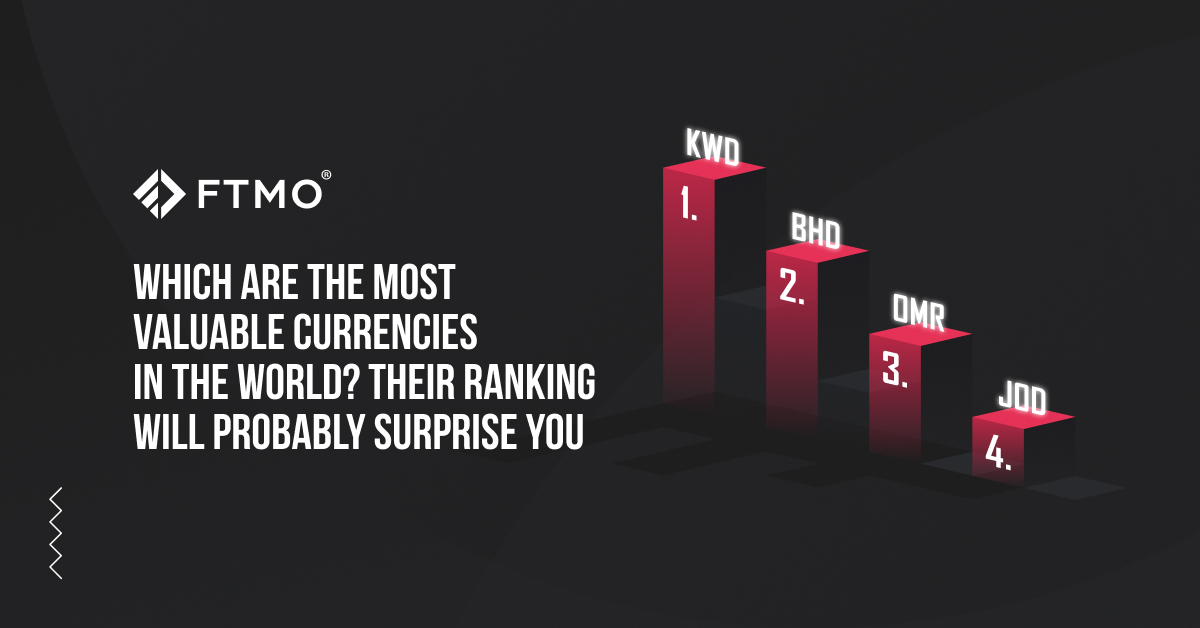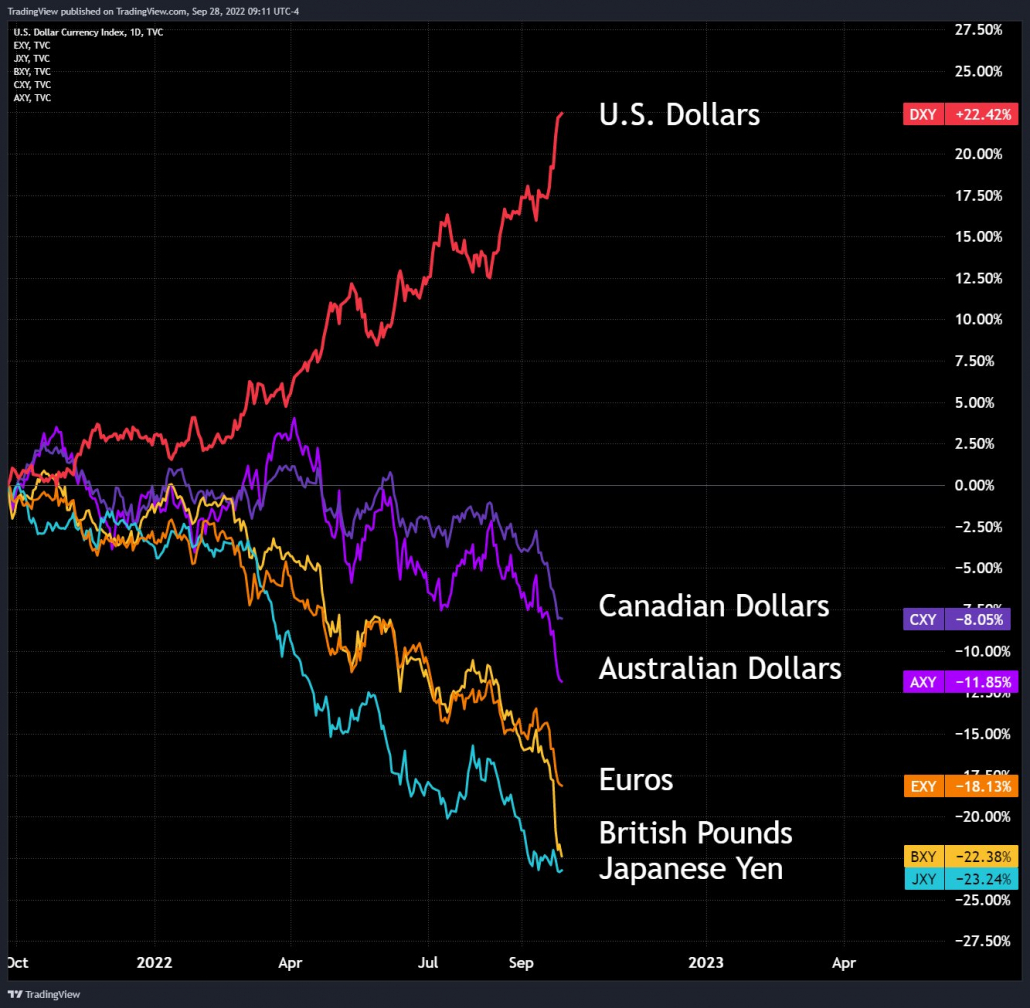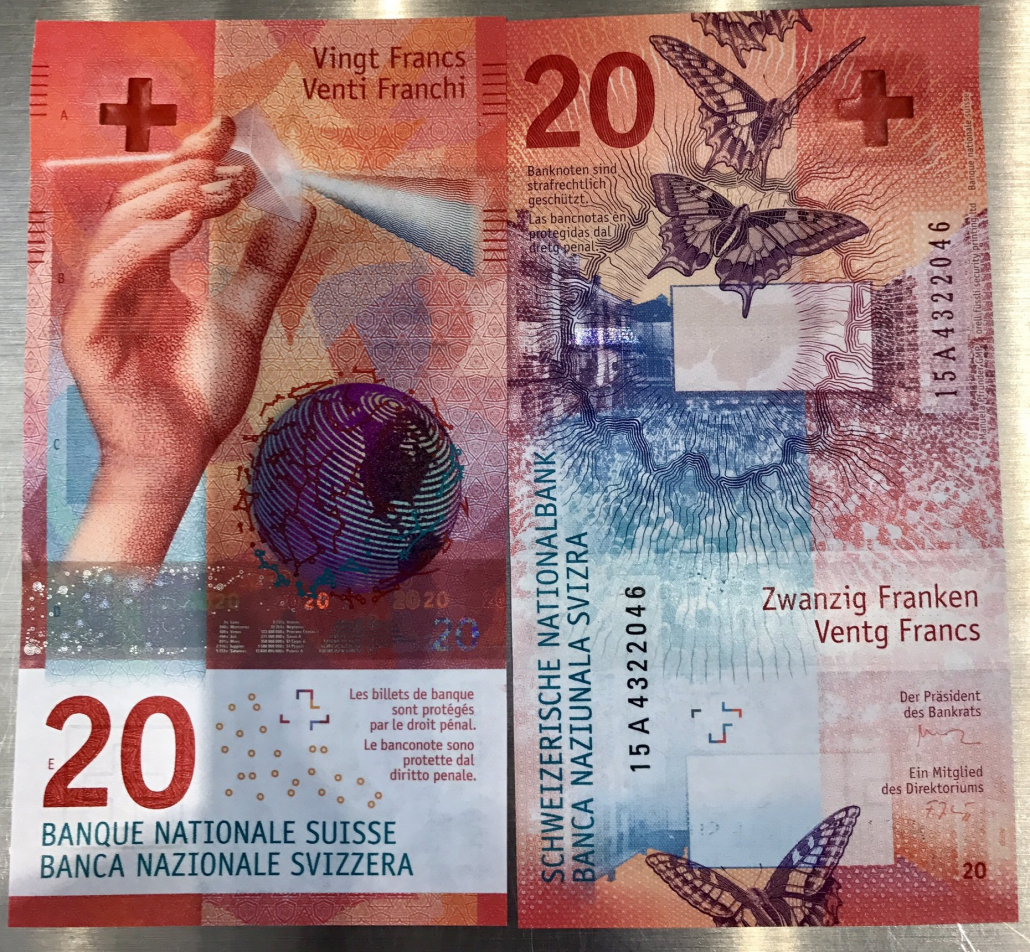
What are the most valuable currencies in the world? Their ranking will probably surprise you
Although the FX market has recently been more volatile than average, not much has changed at the top of the most valuable currencies. In fact, this ranking is dominated by currencies that you probably wouldn't expect to be there, while their position is relatively stable.
While the US dollar is the most traded and most liquid currency, it is far from being the most valuable currency in the world. It may seem that way based on the below chart, but this chart just shows how much divergence there has been between currencies over the last year. The EURUSD pair is below parity for the first time in 20 years, the Japanese yen is at 24-year lows against the US dollar, and the Bank of Japan already had to interfere to prevent further weakening of the Japanese yen through interventions to the FX market.

The GBPUSD pair is also attacking parity already. The British government triggered the sell-off of the pound, which came up with tax cuts that have quite strongly worried the financial markets. To avoid a total collapse in the UK financial markets, the Bank of England eventually had to move to buy long-dated government bonds, which helped the British pound to rise as well.
However, this development did not significantly affect the position of the world’s most valuable currencies. Exchange rates are influenced by several factors such as economic growth, inflation, the political situation and the amount of money in circulation. So here is a list of the ten most valuable currencies, which we have compared to the US dollar for simplicity (the values are accurate as of 29.09.2022).
10. Euro
1 EUR = US$0.98
The euro is the second most traded currency and is also considered the world’s second reserve currency. It was introduced in 1999 and is now the official currency in 19 of the 27 member states of the European Union. The currency fell below the level of 1 euro per dollar in mid-July 2022 (for the first time since December 2002), and for a longer period of time it fell below parity from mid-September (before finally returning above parity in early November 2022). The euro was strongest against the Dollar in 2008, when one euro traded at USD 1.6.
9. American dollar
The US dollar is itself the most traded currency (it appears in more than 80% of Forex trades) and is considered a major reserve currency. It may not be the most valuable currency, but it is undoubtedly the most influential currency in world trade and is also considered a safe haven that investors buy in times of uncertainty. It became the main currency in the US in 1785 and, like most world currencies, became freely convertible in 1971.
8. Bahamian dollar
1 BSD = US$1.01
The Bahamian dollar has been the official currency of the Commonwealth of The Bahamas since 1966 when it replaced the Bahamian pound. It is not the only currency that shares a common name with the US dollar but, unlike other dollars, it also has the same value because it is pegged to the US dollar at a 1:1 ratio. Given the country’s dependence on tourism, it’s no surprise that it’s possible to pay in US dollars. The Bahamas was the first country to introduce an official digital currency, the Sand dollar, in 2020.
7. Swiss franc
1 CHF = US$1.02
The Swiss franc is the official currency of Switzerland and Liechtenstein. The abbreviation CHF stands for Confoederatio Helvetica franc, which is Latin for the Swiss Confederation franc. The currency under the name franc originated in 1798 in the Helvetic Republic, but it did not become legal tender in Switzerland until 1850. It is the seventh most traded currency and is considered one of the most popular safe havens among traders, mainly due to the country's political stability, its neutrality and its developed economy with low inflation rates. Interestingly, Swiss franc banknotes are oriented vertically.

6. British pound
1 GBP = US$1.11
The British pound is one of the most traded currencies on the FX market (after USD, EUR and JPY) and is the oldest currency in the world. It was created in 760 and became the official currency of the United Kingdom after the union of England and Scotland in 1707. In the past, it was the main currency in many of the UK’s colonies (including Canada, Australia and New Zealand), and even today several currencies of smaller island states are linked to it. Until 1940, the pound was pegged to gold, but since then its importance and value against the US dollar have steadily declined. The pound fell to an all-time low against the Dollar at 1.03 on 26 September 2022.
5. Cayman Islands dollar
1 KYD = US$1.20
The Cayman Islands dollar is the official currency of the Cayman Islands. It is an overseas territory of the United Kingdom and a well-known tax haven and an offshore financial centre in the western Caribbean. The currency was introduced in 1970 to replace the Jamaican dollar, which ceased to be valid in the islands in 1972. Since 1974, the currency has been pegged to the dollar at a rate of 1 KYD = US$1.20.
4. Jordanian dinar
1 JOD = US$1.41
The Jordanian dinar has been the official currency in the Kingdom of Jordan since 1950 after it replaced the Palestinian pound. It is also valid in the West Bank. The Jordanian economy is quite diversified and, together with the peg of the Jordanian dinar to the US dollar, provides for a stable currency and the financial system. This helps to attract foreign investments and to maintain a stable currency in a relatively unstable region.
3. Omani rial
1 OMR = US$2.60
Also, the Omani rial is pegged to the US dollar. It was created in the 1970s as a Gulf rupee substitute, and from 1973 to 1986, it was pegged to the Dollar at a ratio of 1 OMR = US$2.89, and since 1986 it has been pegged at a ratio of 1 OMR = US$2.60. Oman maintains the value of its currency partly through oil and gas production but also through a relatively restrictive monetary policy where it limits the money supply, which helps to maintain stability and low inflation. The country is also trying to invest rationally and reduce its dependence on its mineral resources.
2. Bahraini dinar
1 BHD = US$2.65
Another currency tightly pegged to the Dollar's value is the Bahraini dinar. It has been the main currency in the Kingdom of Bahrain since 1965 when it replaced the Gulf rupee. Bahrain was the first country to discover oil on the Arab side of the Persian Gulf, and today oil accounts for the majority of its exports. But it is also the financial centre of the Middle East and a popular tourist destination.
1. Kuwaiti dinar
1 KWD = US$3.23
The most valuable currency in the world is the Kuwaiti dinar, which was created in 1961 by replacing the aforementioned Gulf rupee. Between 1975, the KWD was pegged to a weighted basket of currencies, then to the US dollar until 2007. Since 2007, the KWD has been pegged to a basket of currencies again, but it does not have to rely on a peg to the Dollar compared to the other most valuable currencies. Kuwait, of course, benefits from large oil reserves, making it one of the wealthiest countries in the world with zero taxes and very low unemployment. But the money from the sale of oil goes, among other things, into a large sovereign wealth fund to ensure the country's future prosperity.
Finally, we can add one interesting fact: another currency is more expensive than the Kuwaiti dinar. It is a currency called the luigino, which can be paid for in the Principality of Seborga in northern Italy. Of course, you can't exchange this currency anywhere else, but you can pay with it in the principality. Interestingly, the value of this currency is pegged to the Dollar at a fixed rate of US$6 per luigino.
About FTMO
FTMO developed a 2-step Evaluation Process to find trading talents. Upon successful completion you can get an FTMO Account with a balance of up to $200,000. How does it work?.



